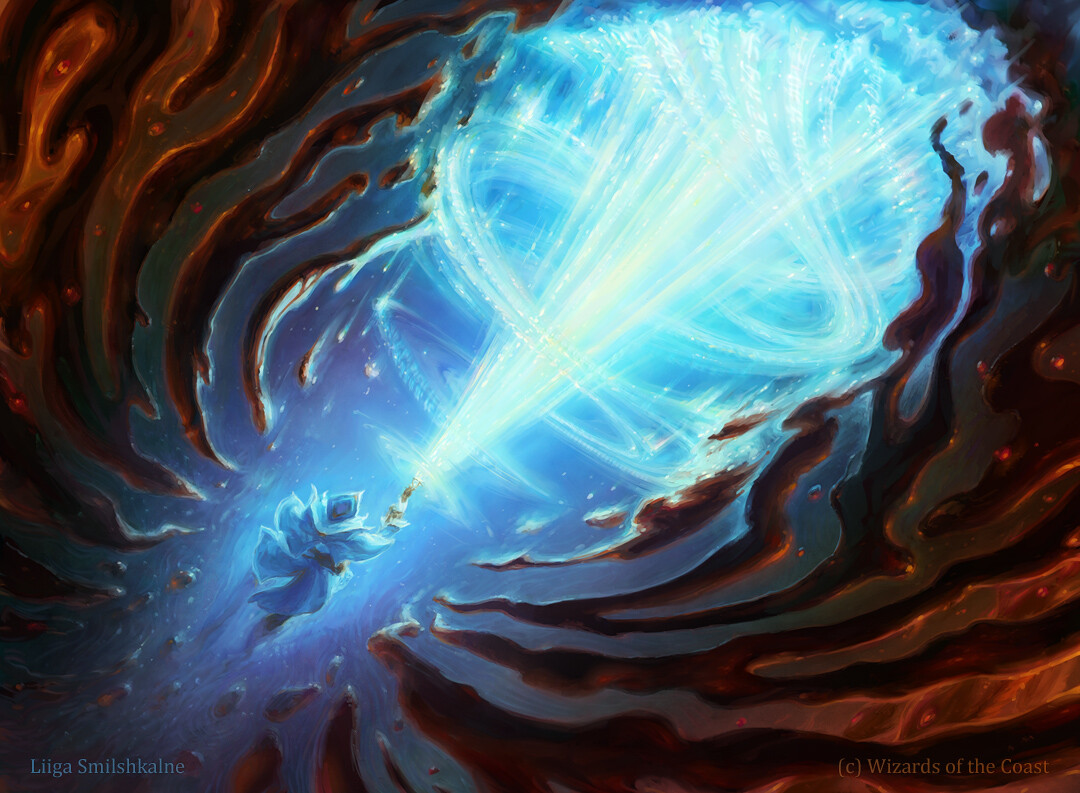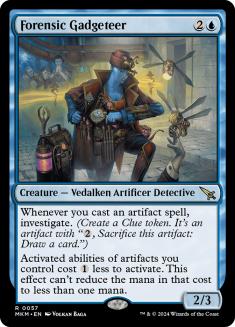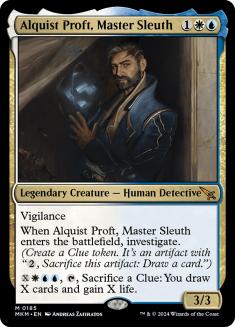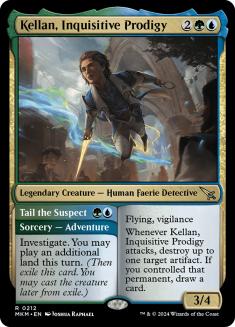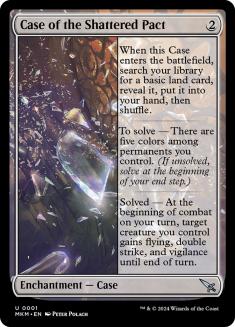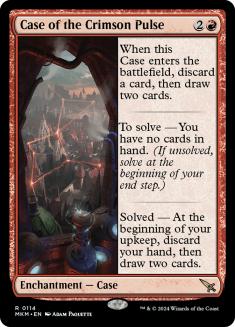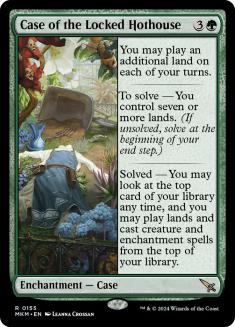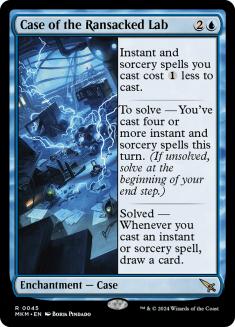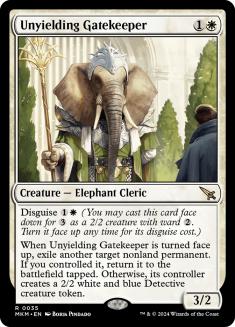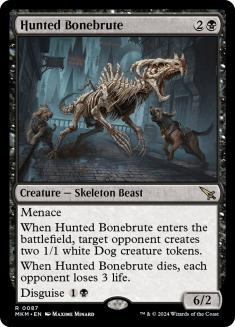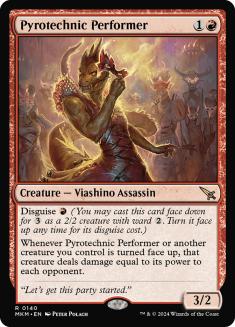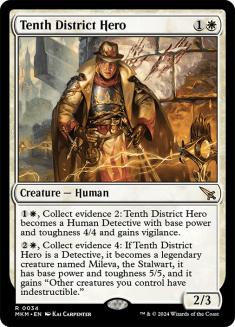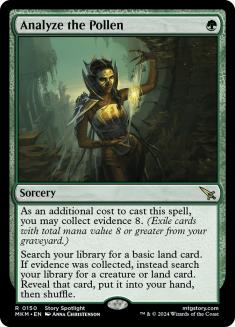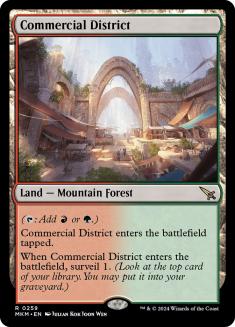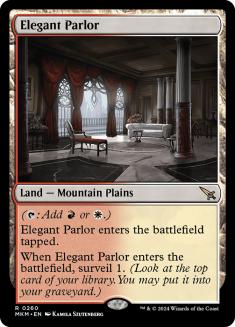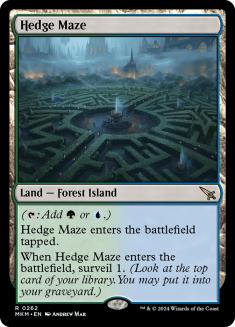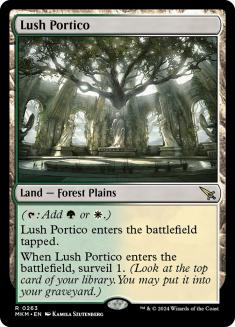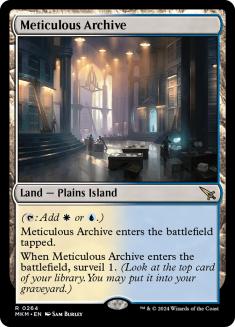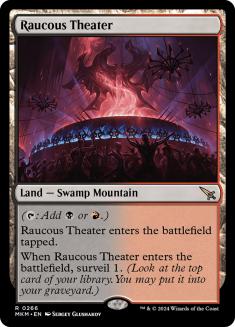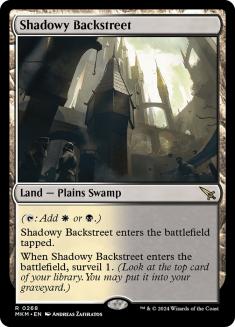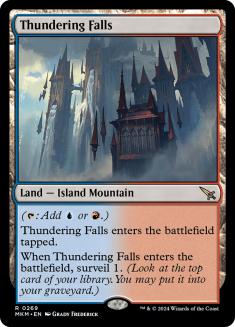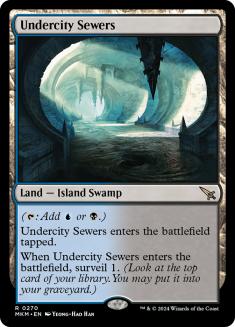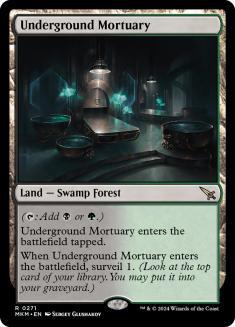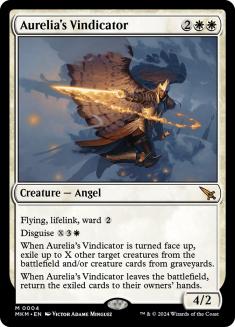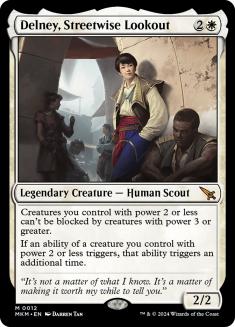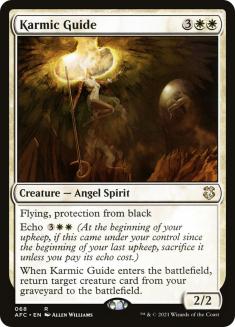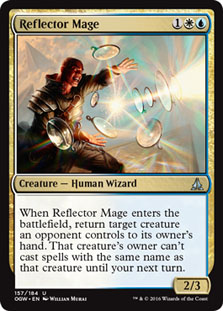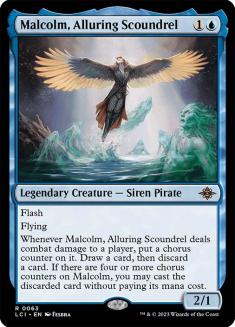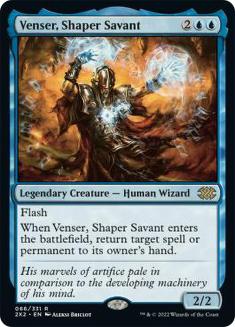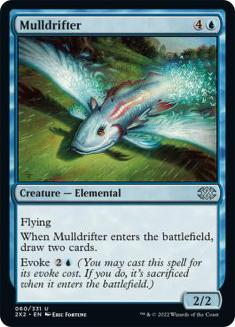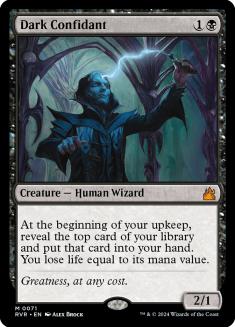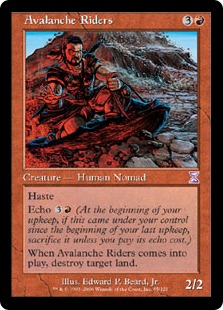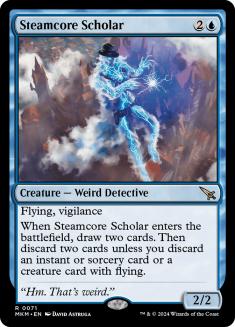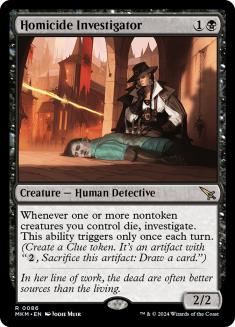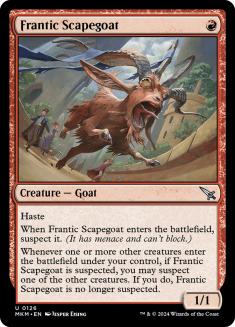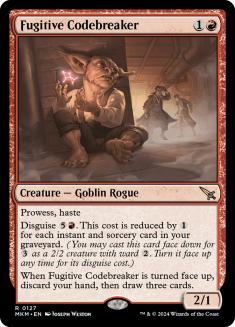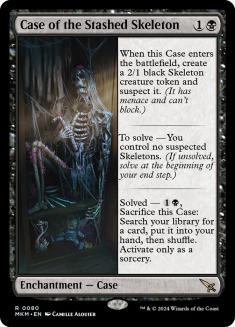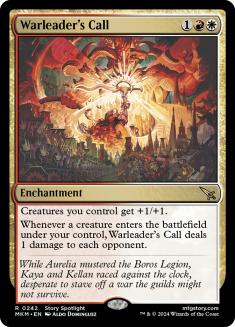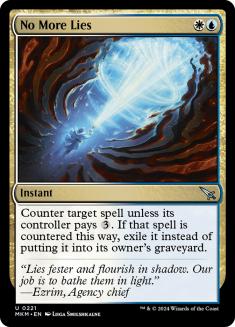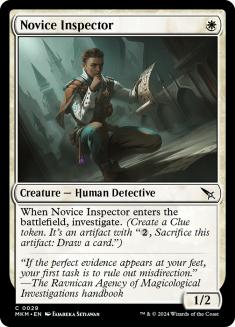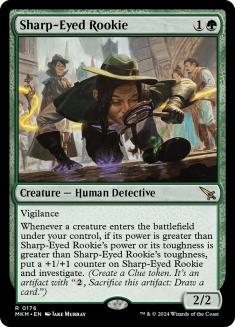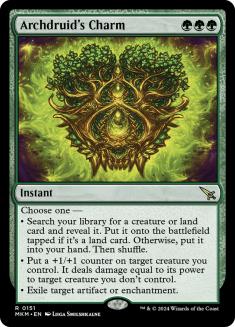Howdy, gamers! With Murders at Karlov Manor now officially released, I’d say it’s time for my list of the Top 10 most Cubeable cards from the set! Before we get into that, let’s start by going over some of its core mechanics and themes.
Detectives
Every murder mystery needs a good detective! While Detective as a creature type was first introduced in the Doctor Who Commander decks, there are far more Detectives in Murders at Karlov Manor and its corresponding Commander release. There is some support for Detectives as a relevant creature type in the set, but nowhere near the level that could realistically matter outside of a set Cube. Detectives do have a pretty distinct flavorful feel, and I’m glad to see the creature type added, even if flavor is about all that it amounts to.
Cases
Case is a new enchantment subtype templated a lot like Saga, demonstrating that there is quite a lot of design space left to explore when it comes to enchantments! Every Case in Murders at Karlov Manor starts with some kind of enters-the-battlefield effect, has some condition to “solve” the case, and then offers some kind of payoff for solving it.
Being a new card subtype can make it difficult to evaluate how powerful a given Case is without really playing with them, but just in understanding the basic shape of these cards reveals a lot. For most Cases, you’ll get some small effect and then need to wait until your next turn to solve them at the end of that turn, and then wait another turn to fully realize the potential of the solved effect. That’s just too much setup to really work in high-powered environments, so while cards like Case of the Ransacked Lab read exciting at first blush, they ask a bit too much of you in practice.
Disguise
Disguise is a new twist on an old mechanic, functioning exactly the same as morph with new terminology and giving ward 2 to face-down disguised creatures. It makes sense to me that you have to juice morph a little to make it viable for Magic in 2024, though there are things that I dislike about this mechanic.
I think you’ll definitely want to have some physical way to remind players that disguised creatures have ward if you feature any in your Cube, though that’s not terribly difficult to accomplish. My issue is more the way you know for sure that a disguised creature is not a morph, making the “backwards compatibility” of the mechanic kind of awkward. Again, morph is weak enough that one-time Cube staple Exalted Angel is not remotely a consideration for Cubes of even modest power levels, but it does make me sad that a disguised creature could never be Zombie Cutthroat or Willbender.
There is some play here, though, with a handful of cards that already existed as well as some new ones that simply mention face-down creatures and the ability to turn creatures face up or face down. As far as updated mechanics go, it’s easily a better implementation than daybound.
Collect Evidence
Next, we have a mechanic that uses the graveyard as a resource in collect evidence. While it is technically a graveyard-centric mechanic, I do want to note that cards that collect evidence don’t play especially well in graveyard-centric Cubes. Much like with delve, exiling cards from your graveyard is a very real cost in an environment that cares about recursion or just having a lot of cards in your graveyard. There are some strong cards that care about collecting evidence, but they’re generally better fits for Cubes without graveyard themes.
Analyze the Pollen is a great example of what I mean, especially as compared to Traverse the Ulvenwald. Both cards give you a Lay of the Land that can turn into a more powerful tutor, but exiling your graveyard to Analyze the Pollen will make a card like Ishkanah, Grafwidow or Emrakul, the Promised End a lackluster find often enough. Conversely, Analyze the Pollen is easier to fit into a Cube that doesn’t want to add cards like Mishra’s Bauble to support delirium.
Surveil Lands
One last honorable mention before I get to my Top 10: the surveil lands. These are massive upgrades over Temples for being both fetchable and surveilling instead of scrying. It’s also awesome that we’re getting all ten of these all at once, unlike the still-incomplete cycles of cycling biomes and Battle lands. For a lot of Cubes, these will compare unfavorably to Triomes, but in environments looking to support two- and three-color decks more than four- and five-color piles, they are an attractive alternative. I’ll likely expand on my thoughts on these in a future article, as I do like them quite a lot.
Now, my list of the ten most broadly Cubeable cards from Murders at Karlov Manor!
10. Aurelia’s Vindicator
I don’t expect many disguise cards to appear in many Cubes, but Aurelia’s Vindicator is a real consideration for having a big payoff for disguising it, and for just being a strong creature to cast face up for four mana! It’s generally weaker to cast than Hero of Bladehold or about any of white’s four-mana planeswalkers, but each mode does enough to make casting it worthwhile, and the modality is appealing.
I mostly admire Aurelia’s Vindicator for giving Exalted Angel the treatment that it would need to show up in 2024. The competition is steep for the highest-powered Cubes, but there’s a lot to like here for environments like Arena Cube. Disguise being a wordier morph is definitely a strike against the card in terms of approachability for someone who has never seen the card before, but Aurelia’s Vindicator certainly isn’t weak.
9. Delney, Streetwise Lookout
A three-mana 2/2 that doesn’t do anything on its own generally wouldn’t make my Top 10 lists, and Delney appearing here is a symptom of Murders at Karlov Manor being at a lower power than we’ve grown accustomed to with recent Standard releases. That said, Delney is a really fun build-around that pays you off for things that white is generally interested in doing anyway.
The evasion is nice for closing games, but Delney generally will show up in Cubes where white contributes to a blink theme or is just generally long on small creatures with triggered abilities. I could rattle off a lot of cards that I’d be excited to put in a Delney deck…
Delney happens to play well with a lot of Sacrifice payoffs like Blood Artist, and is a Human if you care about that sort of thing. Space for this kind of card will be pretty crowded in a lot of Cubes, but I’ve convinced myself to at least secure a copy for Spooky Cube.
8. Steamcore Scholar
Much like Delney, Steamcore Scholar isn’t a card that I would expect to make my list from the average Standard set, but there is a lot to like here for Cubes of varying power levels. Three mana is a little steep for a Vintage Cube discard outlet, but if you discard an instant, sorcery, or creature with flying, then Steamcore Scholar does just generate card advantage. That’s pretty strong when you factor in the 2/2 flying and vigilant body!
Where Steamcore Scholar can really get out of hand is in Cubes with a blink theme. Maybe in conjunction with Delney! I’m a long-time Champion of Wits fan, and while it’s not a strict upgrade, Steamcore Scholar does offer some things that the Champ does not. The roster of great blue cards is long enough that this one won’t make it on individual power level alone for many Cubes, but there are plenty of avenues to facilitate meaningful synergies with the looting ability.
7. Homicide Investigator
Homicide Investigator will rely on a Sacrifice theme to make waves in Cube, but the card offers a lot to like in the right environment. Triggering only once a turn is a drag, as is generating Clues instead of just drawing cards, but in exchange, you get a 2/2 Human for two. Homicide Investigator also triggers off itself dying, which makes it a very solid threat to run out on Turn 2, as it will just replace itself if it dies.
Again, this one isn’t going to be a Vintage Cube-caliber card, but it fits very well into Cubes with dedicated Sacrifice themes, and is another awesome addition to Spooky Cube.
6. Frantic Scapegoat
Frantic Scapegoat is the first card on my list that I think stands out in terms of generic power level. A hasty one-drop with some evasion means you’ll generally be able to get some chip shots in with the Goat, but more importantly, the ability to shift suspicion from the Goat to another creature can really help red decks to punch through a stalled battlefield. You can’t always get a good first attack in with Laelia, the Blade Reforged, but what if it had menace? Magda, Brazen Outlaw is another commonly Cubed card that looks much better with a little help from the Goat.
Frantic Scapegoat isn’t Ragavan, Nimble Pilferer or Monastery Swiftspear or even Goblin Guide, but in the same way that Rabbit Battery is awesome just for being Raging Goblin with upside, I think there’s definitely something here.
5. Fugitive Codebreaker
I might have the order on Fugitive Codebreaker and Frantic Scapegoat backwards with how far red two=drops have come in recent years, but when they design cards that are specifically catered to me, I can’t help but like them.
One-toughness prowess creatures struggle a bit because they need help to make good attacks in the face of opponents blocking with 1/1s, with the second innate point of toughness being a huge part of the draw to Monastery Swiftspear. As such, Fugitive Codebreaker gains a lot from the ability to disguise it, much like Aurelia’s Vindicator. Most Cubes won’t make it especially easy to flip up Fugitive Codebreaker for less than three mana, but card draw is a very relevant upside in games where just casting the 2/1 isn’t good enough. The ward helping the face-down creature survive or at least taxing opposing removal goes a long way here, too.
I don’t see Fugitive Codebreaker as breaking the mold for Vintage Cube, but it is definitely playable there. I’m very excited to add the card to the Tempo Twobert as another Bedlam Reveler-style effect, and I like it for any Cube with an aggressive spells-matter slant.
4. Case of the Stashed Skeleton
I got back and forth on Case of the Stashed Skeleton a little, given that the card is a little closer to Diabolic Tutor than Demonic Tutor. You have to pay four mana total for the tutor effect, but splitting it up and getting a Skeleton for your trouble isn’t nothing.
It should be fairly trivial to dispose of your suspected Skeleton in any Sacrifice deck, and Sacrifice decks also tend to lean heavily on a couple of specific payoffs, which makes the tutor quite valuable. I’ve tinkered with Diabolic Intent a little in Cube and have found it to be powerful, if unexciting. A similar card that gives you a body instead of chewing on fodder that you otherwise generated is easier to justify in terms of a slot in a given deck as well as a slot in a Cube.
Case of the Stashed Skeleton is plenty strong for any Cube that has an aggressive slant to the black column, though overwhelmingly that is going to suggest a Sacrifice theme. In a hypothetical Cube where there is a black aggressive deck that doesn’t involve Sacrifice support, I still like this card pretty well for being a relatively cheap and evasive body that eventually become a bigger problem for the opponent.
3. Warleader’s Call
Long gone are the days when a new Glorious Anthem variant was actively exciting, and Warleader’s Call isn’t a Vintage Cube-caliber card, but it’s awesome for Cubes closer to the Arena Cube. Technically it plays well with Forth Eorlingas! but it’ll make a lot more sense in conjunction with Song of Totentanz, Secure the Wastes, and cards of a more modest power level.
There are all kinds of ways to support Boros tokens strategies in Cube, and it’s an especially nice archetype to have sandwiched in a broader Mardu Sacrifice theme. Warleader’s Call is easily a standout casual hit for the set, and is one that I’m sure many Cube designers will be excited to add to their environments. I haven’t been maintaining the project, but this card would be right at home in the PG Cube.
2. No More Lies
I wouldn’t say that No More Lies is more exciting than Warleader’s Call, but it is the sort of card that you could put in about any Cube and nobody would bat an eye. In some ways it’s just a gold Mana Leak, but the exile clause can be a big deal in a lot of Cubes. No More Lies is legal for Peasant Cubes at uncommon, and ways to recur cards are plentiful in many Peasant Cubes, and really just in Cube generally.
Azorius can be a tough color combination to marry to an archetype other than just “Control”, and No More Lies fits perfectly into Azorius Control shells. As white gets more and more instant-speed stuff, especially the mighty Reprieve, a good Azorius counterspell just makes sense in a lot of Cubes.
1. Novice Inspector
And that brings us to the most Cubeable card from Murders at Karlov Manor… a functional Thraben Inspector reprint…
Thraben Inspector is more powerful than Usher of the Fallen, or really any Savannah Lions variant, so Novice Inspector is a big deal for Cubes of all shapes and sizes, from Pauper to Vintage. I’ll be adding Novice Inspector to more of my Cubes than not, and in terms of both abstract power and potential synergies I would expect a lot of Cube designers to find themselves in a similar position.
It’s maybe a bit deflating to have a functional reprint of a common take the number one slot for a set, but a second Thraben Inspector is a meaningful boost to Pauper Cubes and some other environments where white meaningfully lags behind the other colors.
Where’s the Green?
It’s more of a miss to me that no green cards were real considerations for my list, but I will at least say that I love and intend to Cube with Sharp-Eyed Rookie, and that Archdruid’s Charm is there on power level, but the casting cost is too restrictive to expect it to show up in many Cubes.
Murders at Karlov Manor also has plenty going on in terms of more niche and specific support, with Aftermath Analyst and Undergrowth Recon both jumping off the page as potential lands build-arounds.
Pulling together a Top 10 list was a little tough with the total number of considerations and the strength of the bottom half being a little light, but I still personally need a good number of cards for my Cubes, and can point to cards that will be popular for others even if they’re not for me. The set is no Kamigawa: Neon Dynasty, but that’s also not a reasonable bar to hold every set to. On balance, I’m satisfied with what this release adds to the world of Cube.

